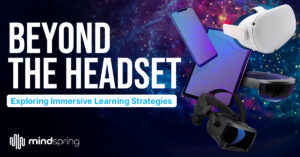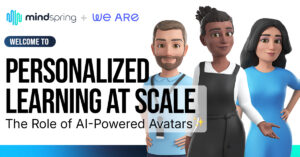
In today’s ever-changing world of learning and development (L&D), integrating new technologies often sparks debate over their long-term value versus short-lived trends. Augmented Reality (AR) is at the leading edge of this discussion, promising to revolutionize training and educational processes. But does AR truly represent the next leap in L&D, or is it merely a passing trend? To answer this, we need to explore both the compelling use cases and the solid reasons that substantiate AR’s staying power in educational strategies.
What is Augmented Reality?
Augmented Reality blends digital components with the real world in real-time, enhancing one’s surroundings with interactive virtual details. This can range from simple text to complex 3D models or holograms. Unlike Virtual Reality (VR), which immerses users in a completely virtual environment, AR enhances the real world by overlaying digital information onto it. This feature makes AR especially suitable for visualizing physical objects and for hands-on training where context and environment are crucial.
Use Cases of AR in Learning and Development
AR’s application in L&D is diverse, touching everything from just-in-time learning to interactive product design. Here are several use cases where AR is already making a significant impact:
- Real-Time Performance Support
AR provides immediate data in work contexts or “at the point of need”, which is invaluable for tasks requiring precision and expertise. For instance, a maintenance technician might see a digital overlay on a machine showing where to make specific adjustments, or a doctor could have a patient’s medical stats directly visible during a procedure. - Enhanced Safety Training
Through AR, learners can interact with potentially dangerous job scenarios in a risk-free setting. This approach is particularly effective in industries like manufacturing or energy, where understanding the spatial and mechanical aspects of machinery is essential for safety, such as lock-out tag-out procedures. - Scalable Learning Solutions
Because AR works so well with mobile devices, programs deployed in this manner can provide consistent training across global teams without the logistical challenges of traditional methods. This scalability ensures all employees receive the same high-quality training regardless of location. - Iterative Prototyping
AR is evolving the process of product development through iterative prototyping. Designers and engineers can visualize and interact with a 3D model of their products as if they were already manufactured. This enables immediate feedback and rapid iterations without the need for costly physical prototypes, significantly accelerating the development process and improving the final product’s quality. - Product Visualization
AR allows for detailed product visualization in sectors where understanding the product’s physical attributes is crucial. For example, in automotive or aerospace training programs, learners can explore complex assemblies and parts in 3D space, getting a feel for the scale, mechanics, and integration of different components. This not only aids in better comprehension but also enhances the learner’s ability to perform maintenance or assembly tasks with higher precision.
Reasons Why AR is More Than Just Hype
- Improved Engagement and Retention
The immersive nature of AR captivates users, leading to higher engagement levels. Studies have shown that learners using AR demonstrate better retention rates due to the active and engaging learning environment it creates. - Cost-Effectiveness Over Time
While deploying AR through headsets can be expensive upfront, the use of mobile device technology offers a highly cost-effective alternative. This approach considerably lowers the entry barrier to AR, making it more accessible and scalable. Over time, the cost savings become even more pronounced due to reduced needs for physical materials, travel, and training personnel. AR’s inherent flexibility also supports fast updates and adaptations to training content without notable incremental costs, enhancing its long-term cost-effectiveness. - Accessibility and Adaptability
As AR technology advances, it becomes more accessible. Hands-free devices are becoming more user-friendly and less expensive, which breaks down the barriers to widespread adoption. AR can also be used on mobile devices, significantly increasing usability. This adaptability extends to the content AR can deliver, which can be easily updated and pushed out to users without geographical constraints. - Proven Track Record Across Industries
AR is not limited to niche applications; it is being successfully implemented across a variety of sectors, including manufacturing, healthcare, engineering, retail, and education. This wide applicability indicates its utility and effectiveness as a training tool.
The Verdict
AR in L&D is proving to be more than just the latest fad, in fact, it provides one of the best options for just-in-time learning. Its ability to integrate seamlessly into natural settings, enhancing both learning engagement and retention, positions AR as a crucial component of future educational landscapes. As technology becomes more integrated into daily practices, AR’s role in training will grow. It won’t be just a novelty but a necessary tool for educating the next generation of professionals. Thus, augmented reality is not just hype—it’s poised to be the next big thing in learning and development.
If you are considering integrating AR into your L&D programs and are curious about its potential impact and applicability to your specific business needs, we are here to help. At MindSpring, we adopt a consultative approach grounded in learning science, assisting clients in evaluating and implementing the most effective learning solutions. Connect with one of our learning experts today, and let’s explore how augmented reality can enhance your training initiatives and drive your organization forward.


